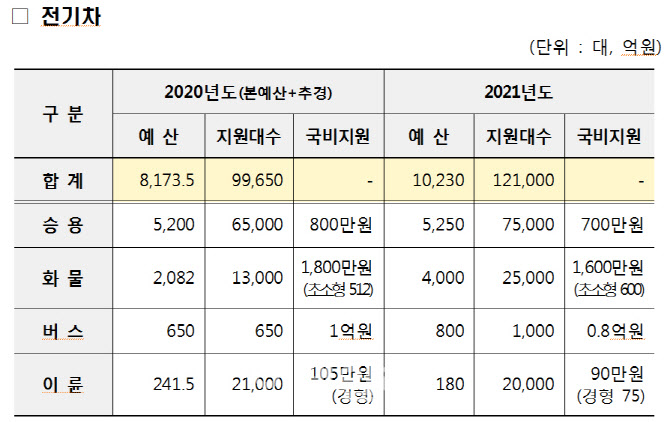On the 8th, the government held an innovative growth BIG3 (system semiconductor, future car, biohealth) promotion meeting at the government office in Seoul and confirmed the’reorganization plan for the pollution-free car purchase support system’.
In accordance with the 2050 Carbon Neutral Declaration, innovative measures to reduce greenhouse gas emissions are required, and as the global automobile market is reorganized to focus on electric and hydrogen vehicles, the government has prepared this reorganization plan to accelerate the transition to pollution-free vehicles.
Strengthen support for high-efficiency vehicles to improve the performance of pollution-free vehicles and to induce price reduction.
In order to provide more subsidies to electric vehicles with high battery efficiency, the percentage of mileage in the subsidy was reduced from 50% to 40%, and the ratio of fuel consumption (km/kH), which is considered an indicator of battery efficiency, increased from 50% to 60%. do.
In addition, in order to improve the problem of performance degradation in winter, incentives of up to 500,000 won will be given to energy-efficient vehicles with excellent driving distances at low temperatures (-7°C) compared to room temperature (23°C).
In the case of hydrogen cars, the subsidy support unit price is maintained at 22.5 million won, considering that it is in the early stages of supply.
In addition, subsidy support standards are differentiated for each price segment. The intention is to induce price cuts by increasing support for mass-priced vehicles.
Vehicles over 90 million won, such as Tesla Model S, Mercedes EQC, Audi e-tron, and Hyundai G80, are excluded from support, and only 50% of the calculated amount is supported for less than 60 million to 90 million won. Examples include Tesla Model 3, BMW i3, Hyundai Ioniq 5 (part), JW, and Kia Motors CV (part). If it is less than 60 million won, the full amount is paid.
In addition, performance subsidies provided to vehicles of companies subject to the’Low-Emission Vehicle Distribution Target System’ will be differentially supported according to the target achievement rate. Accordingly, last year, 200,000 won was paid to the target vehicle, but this year, in addition to 200,000 won, an additional amount of 100,000 to 300,000 won will be given.
For micro-cars with high demand for small self-employed and small business owners, the subsidy will be increased from 512 million won to 6 million won, and the quantity will be allocated to SMEs separately.
The subsidy support amount is also allocated to participating companies, including leasing/rental cars and K-EV100 (a public declaration that the vehicle will be converted to 100% pollution-free vehicles by 2030) to accelerate the corporation’s conversion to pollution-free vehicles.
|

